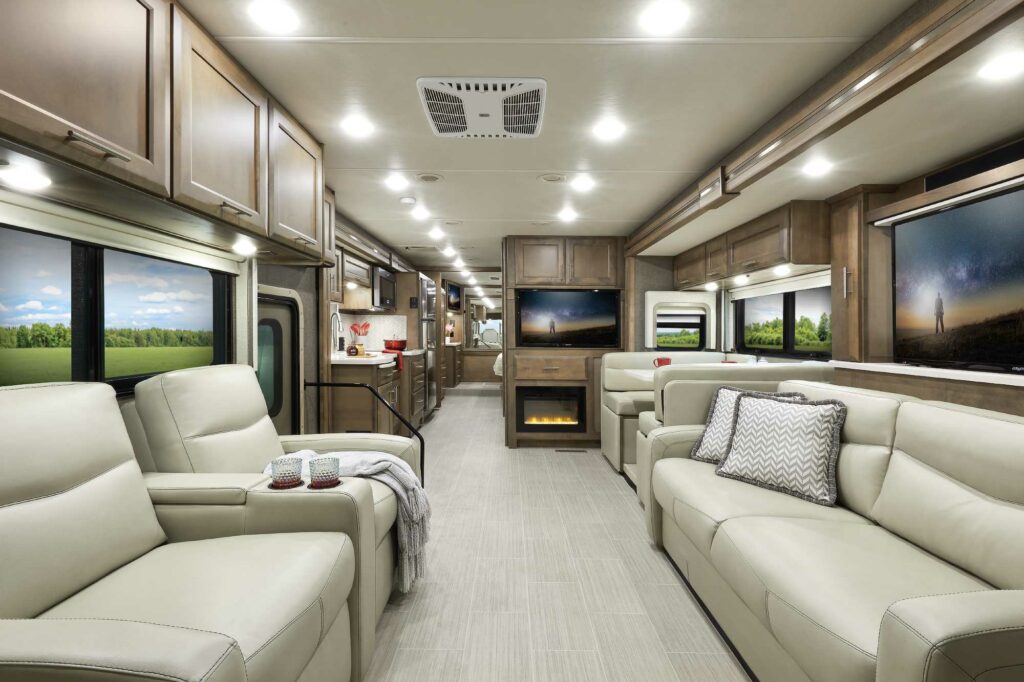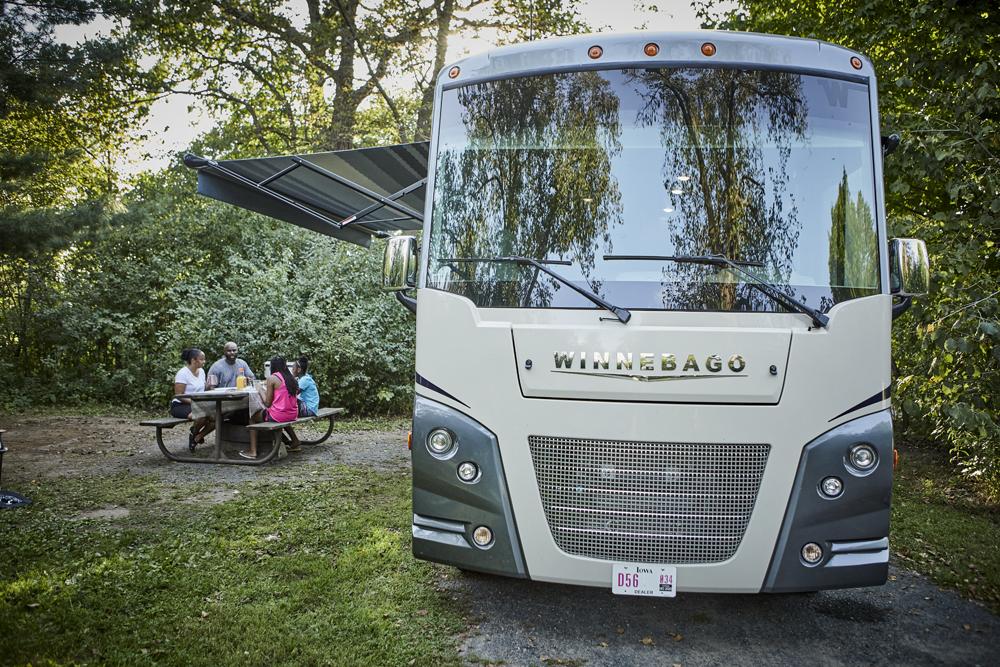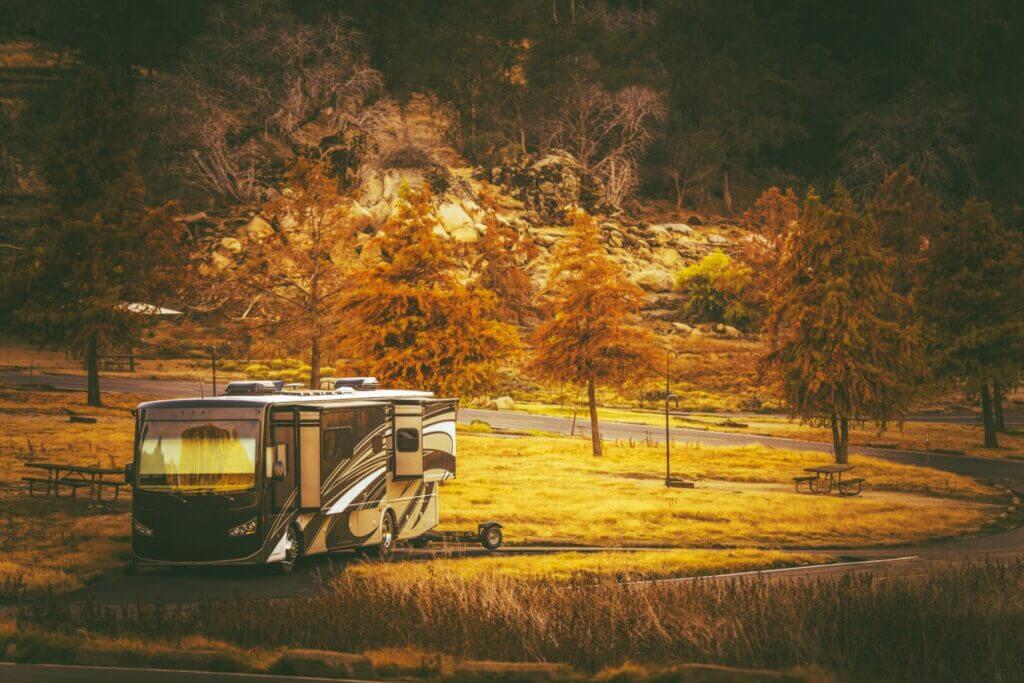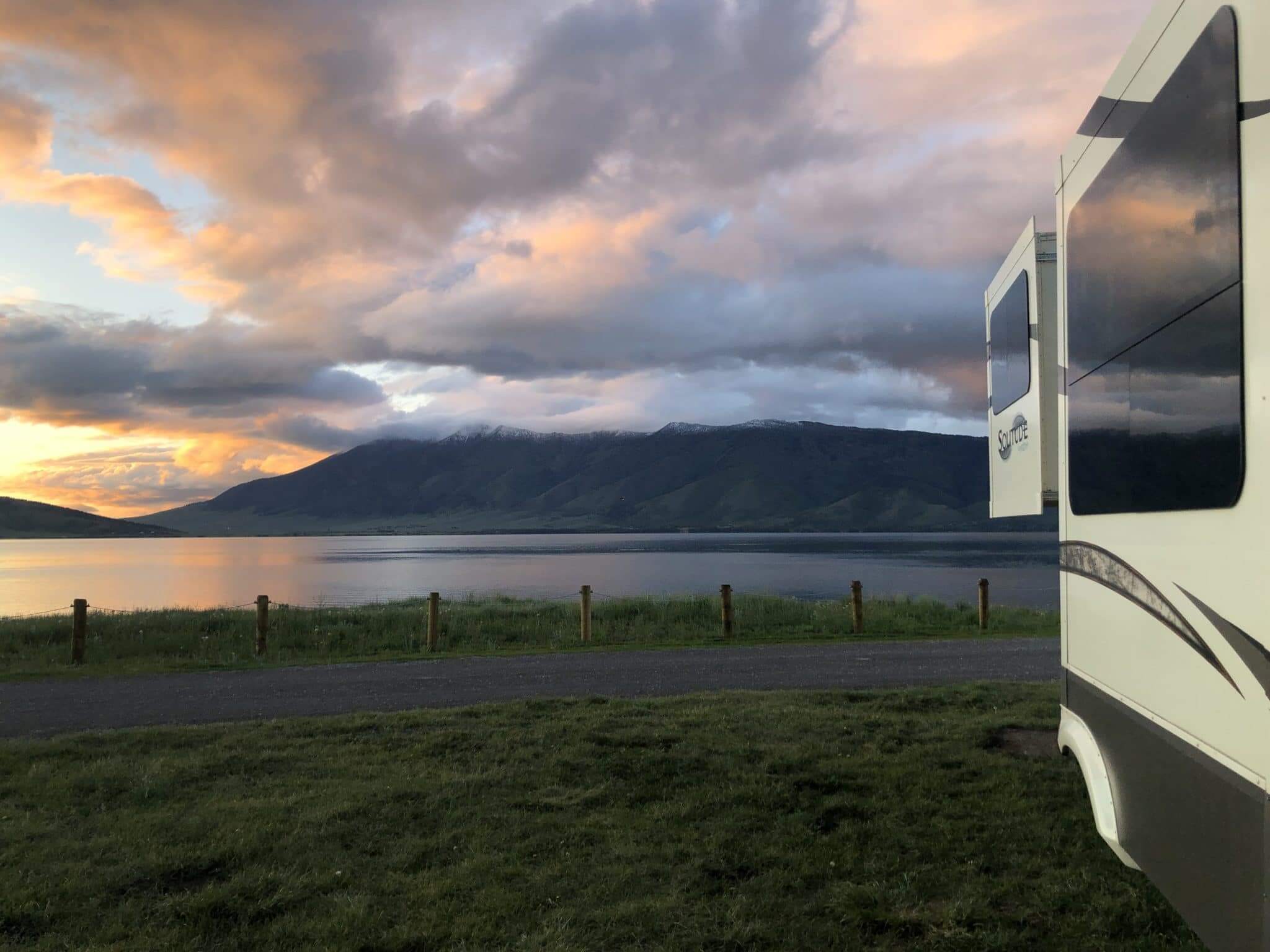Table of Contents Show
You may find all the different kinds of RVs confusing. We’ll try to break it down for you by answering a big question: What is a Class A motorhome?
Let’s find out!
What Is a Class A Motorhome?
A description like Class A suggests something that’s top of the line. In this case, that’s right on the money, especially if your idea of quality is luxury and comfort. Class A motorhomes are the largest of the big rigs. They usually range from 26 to 45 feet long and are 8 feet wide. These custom coaches built on heavy-duty frames almost look like tour buses.
There’s lots of room inside a Class A. They can usually sleep four or more adults comfortably, and many also have bunk beds to accommodate the kids. You can also expect a full kitchen with full-sized appliances as well as a lavish bathroom (or two). And with a washer and dryer, you don’t have to try to find parking outside a Laundromat.
Some Class A RVs run on gas while others burn diesel. The latter, known as “diesel pushers,” have engines in the rear.
How Much Does a Class A Motorhome Cost?
It costs a pretty penny to live the high life. Along with an entire family and their toys, a Class A rig carries a bit of status, too. They can easily cost more than a house.
Pricewise, there are lots of variables. Are you shopping for a used RV or a shiny one straight off the showroom floor? If it’s brand new, you may want to have it customized down to the last detail. This is where sticker prices expand.
What is a ballpark figure for a new Class A motorhome? It’s easily around $100,000 and can soar to $500,000 or more. Many lie within a middle range of $200,000 to $300,000. For a new diesel pusher, count on a minimum of $160,000. Of course, the sky’s the limit, with some over-the-top high-end coaches reaching six figures.

Class A Motorhome Pros
What do you get for that kind of money? Besides getting jealous glances from other campers, here are some other significant advantages of Class A motorhomes.
Large Living Space
You won’t feel cramped with plenty of leg and elbow room. Besides the ability to sleep so many people, that space converts into good-sized living quarters. And you can take advantage of it while you travel.
Travel trailers are pretty much locked down and off-limits when in transit. However, with a motorhome, you can spread out while rolling instead of being confined to the tow vehicle. This makes it easier for everyone to create their own space.
Lots of Storage
Have you ever experienced storage envy? A big motorhome has wide-open, spacious pass-through storage bays that can make other campers drool. Additional storage areas inside include huge overhead compartments.
Good for Boondocking
OK, hunkering down in a Class A coach won’t necessarily get you close to nature. But you also won’t have to rush back to civilization. Having your own power and huge water tanks means you can be self-contained for a long time. Pulling up to a dispersed camping site and setting the emergency brake is all it takes to set up your base camp. Most Class A’s have automatic levelers, too.
Can Tow a TOAD
You can’t drive a Class A coach all around town, but you can easily take another vehicle with you. Just hitch your car, truck, or SUV to the rear and take it along for the ride. When you come to a stopping point, leave the cumbersome coach behind and ride more freely in your smaller towed vehicle.
More Amenities and Luxury Features
Those big panoramic windows give you a feeling of freedom as you drive. So do all of the extras on board. Traveling in Class A style means more built-in amenities and luxury features than other RVs. The living room usually has a sofa and recliners and sometimes a fireplace. Step into the kitchen, and you’ll find it fully equipped with a stove, oven, microwave, fridge, and freezer. In the master bedroom, you can sprawl out on a king-sized mattress. You may also find multiple TVs too, usually inside and out.

Class A Motorhome Cons
Besides the cost, a few other things may make a Class A motorhome less of a dream machine. They don’t work for everyone, and here are some reasons why.
Can Be Difficult to Maneuver
For their size, some of these big rigs are fairly agile and have a tight turning radius. But let’s face it, you may have difficulty driving these beasts. To avoid a costly collision, you have to be aware of your height, weight, and length at all times.
Limited in Where You Can Go
You can’t sidestep the fact that they have a large footprint. You can’t fit it in many places, whether urban or remote. You will often need your extra towed vehicle to get around. You won’t always have room to park in crowded places, and you’ll often need to fill up at truck stops.
Low MPG
These huge tanks typically hold 80 to 150 gallons. An RV rule of thumb says the bigger the RV, the lower the mileage. Unfortunately for Class A owners, it’s true. Gas-powered Class A motorhomes get around 6 to 10 miles per gallon. You can expect a little better with a diesel, around 8 to 14 mpg.

Is it Difficult to Drive a Class A RV?
It looks like a bus, but does it drive like one? You’ll have a little bit of a learning curve here, but most owners say they quickly got the hang of it. You probably wouldn’t want to make your initial test drive on a busy freeway, however. (And don’t try a U-turn right away.)
The view from the driver’s seat of a Class A is much higher than you might expect, which may take some getting used to. Turning can also pose a challenge due to the long wheelbase.
First-Class Travel
What is a Class A motorhome? It’s a way to travel first-class while being almost entirely self-contained. These impressive coaches lead the pack. Like all RVs, they have their pros and cons, but many travelers insist they are the only way to go.






